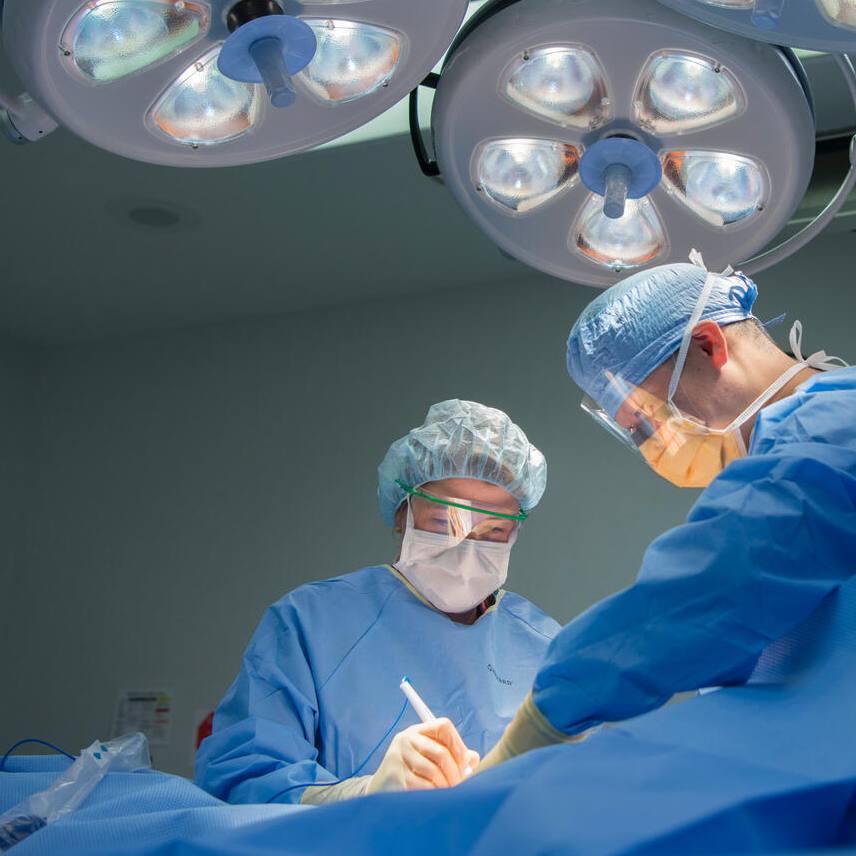-
Mayo Clinic Q and A: What are fibroids?

DEAR MAYO CLINIC: I am 27 and have heavy menstrual cycles. In the past year, I have begun to have more pelvic pain, especially during my period. A friend said I should get checked for fibroids. What are fibroids, and how do you treat them?
ANSWER: Uterine fibroids, also called leiomyomas or myomas, are benign masses that come from the muscle portion of the uterus.
Fibroids are common. Approximately 80% of people born with a uterus will develop fibroids, but not everyone has symptoms. Fibroids are most often diagnosed between the ages of 20 and 40 years old.
The cause of fibroids is unknown, although estrogen and progesterone appear to promote the growth of fibroids. Scientists are looking into other possible risk factors, such as family history, early onset of menstruation and lifestyle factors. People of African descent have a greater risk of fibroids, which can occur at an earlier age and produce more severe symptoms.
The main types of symptoms caused by fibroids are:
- Heavy or prolonged menstrual bleeding
This can include changing a tampon or pad every hour, having bleeding for more than seven days or bleeding that prevents you from doing normal activities like going to work. - Pain
Most commonly, fibroids cause pain during your period, but if they are large, they can cause a constant feeling of pressure or fullness — similar to being pregnant. - Bulk symptoms
This can include seeing a bulge in your abdomen, like looking pregnant when you are not; urinary frequency; difficulty passing bowel movements; or feeling full constantly.
In some women, reproductive issues, including difficulty getting pregnant or miscarriage, may be a sign of fibroids.
Given that excessive menstrual bleeding and pelvic pain may be signs of any number of issues, I always recommend that any person experiencing pain or heavy periods should visit their gynecologist.
Fibroids often can be felt on physical exam. Usually when the uterus is enlarged or irregular, an ultrasound is ordered as the first test to diagnose fibroids.
Both medical and surgical treatment options are available to treat fibroids. Treatment is individualized to each patient, depending on which symptoms are most bothersome, as well as the size, number and location of the fibroids, and whether pregnancy is desired in the future.
Most medications aim to reduce the heavy bleeding common in people with fibroids. Hormonal medications — both birth control and therapies unrelated to birth control, as well as nonhormonal medications can help suppress period bleeding. While medications can help shrink fibroids, these medications are not meant to be taken long term.
Multiple surgical options are available, including minimally invasive surgical approaches that are safer and have a shorter recovery time. Surgical treatments include:
- Hysterectomy
With a hysterectomy, the uterus is removed. Removing the uterus and the fibroids is a great option for people who are concerned about fibroids coming back in the future and have no desire for pregnancy. After a hysterectomy, there will be no menstrual bleeding ever again, but a person will no longer be able to carry a pregnancy. A hysterectomy does not cause menopause. This type of procedure may be performed laparoscopically, with incisions no bigger than 1 centimeter, or the size of your fingertip. - Myomectomy
A myomectomy is a surgery that aims to remove only the symptom-causing fibroids through the vagina or through small laparoscopic incisions. - Uterine fibroid embolization
Also known as uterine artery embolization, uterine fibroid embolization is a procedure that blocks the blood supply to fibroids, causing them to shrink within several weeks or months. Most doctors agree that pregnancy is not recommended after this procedure. - Radiofrequency fibroid ablation
Radiofrequency fibroid ablation is a technique that uses a device inserted into the fibroid and destroys the tissue with heat. Because this is a newer technique, few providers are trained in this technology, and you may need to ask your health care provider for a referral to a fibroid clinic or specialist. - Magnetic resonance-guided focused ultrasound
Magnetic resonance-guided focused ultrasound is performed in an MRI machine. This treatment uses energy through the abdominal wall to destroy the fibroid. The downside of this procedure is that it is only offered in certain specialty centers, such as Mayo Clinic, and it may not be covered by insurance. - Endometrial ablation
Endometrial ablation destroys the lining of the uterus using a device inserted through the vagina. This treatment does not shrink the fibroids, but it can decrease heavy periods caused by fibroids.
If you are diagnosed with fibroids, it's important to know that you have many treatment options and you can return to having a good quality of life. — Dr. Michelle Louie, Surgery, Mayo Clinic, Phoenix
****************************
Related Articles
- Mayo Clinic Minute: Can uterine fibroids affect pregnancy? published 5/11/22
- Women’s Wellness: Uterine fibroids are common noncancerous growths published 10/16/20






